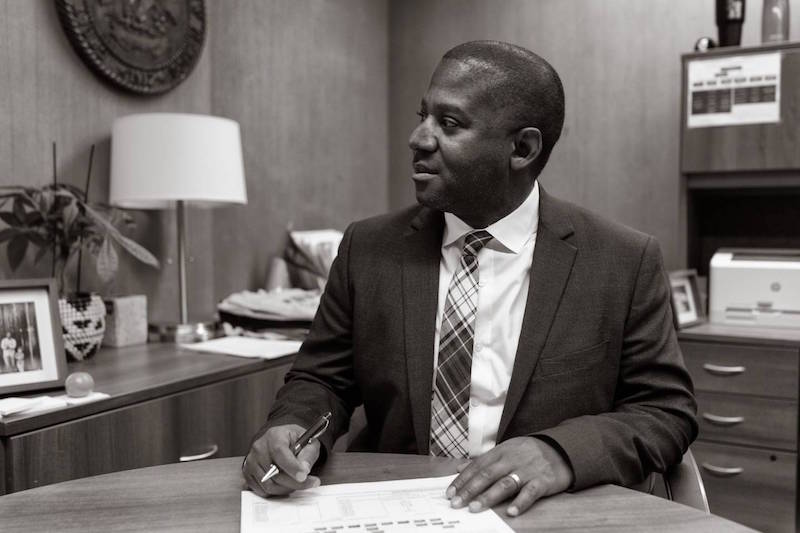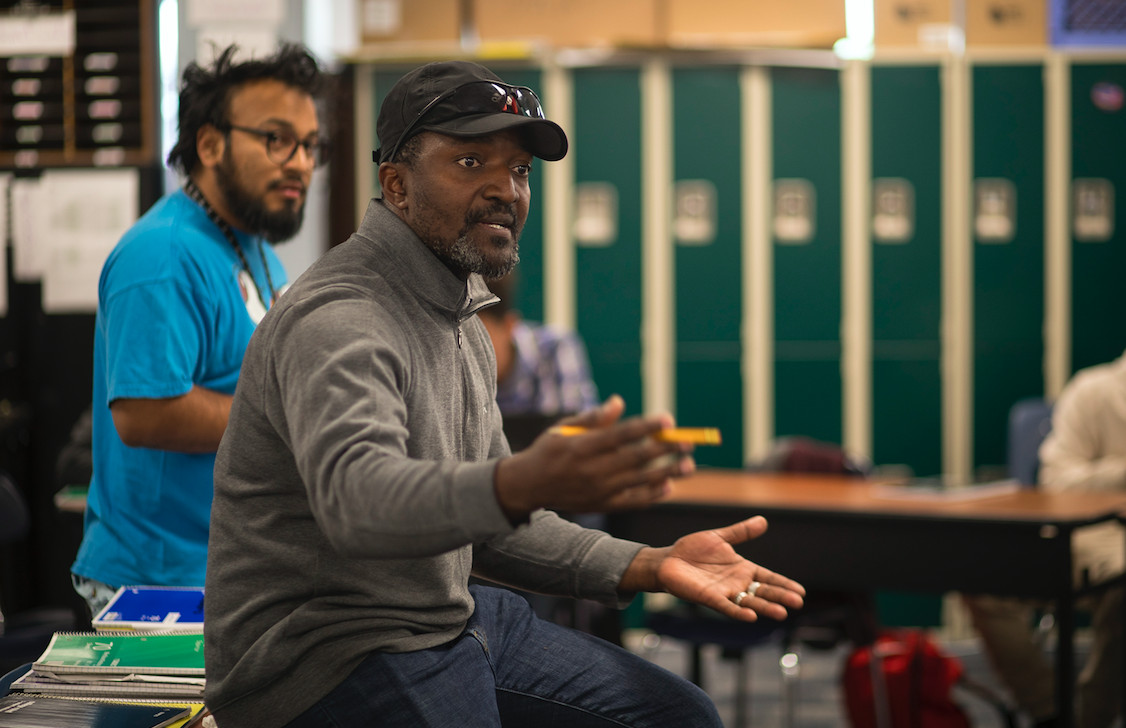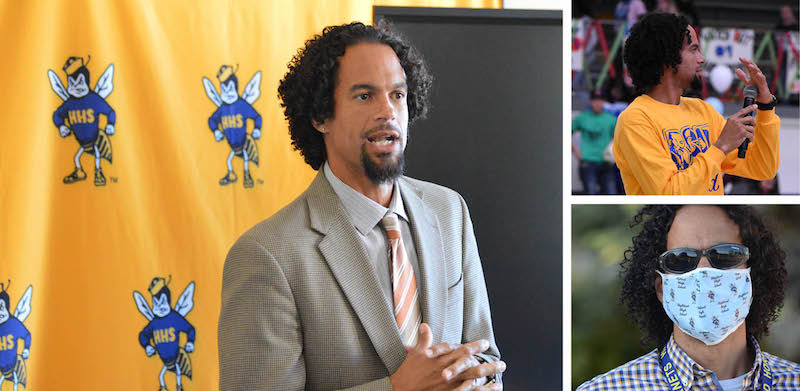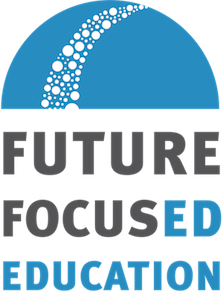The Future of Black Education
New Mexico Leaders Discuss Actions to Dismantle the Racist System
By Future Focused Education | June 18, 2020
Future Focused Education is in solidarity with Black Lives Matter and we condemn white supremacy. It is important that we are on the record about these two facts. In this time of reckoning, we are facing our nation's history of bigotry and violence. We want to make it clear that we stand with those who are fighting for change.
As New Mexicans we must acknowledge that we have contributed to the marginalization of our Black friends, colleagues, and community. The tri-cultural frame that permeates our consciousness is destructive. It actively erases our Black communities by only recognizing the Indigenous, Latinx, and white populations. Black people in New Mexico have suffered by being an afterthought in our policies, funding, and historical narrative. The goal of this blog is to lift up their voices.
We are grateful to Ryan Stewart, Marco Harris, Moneka Stevens, and Patrik Nkouaga for lending their voice. We can only say, it's about time we gave them the space to educate our New Mexico community about what it means to be a Black educator in our state.
Ryan Stewart
Former New Mexico Secretary of Education

How has your teaching experience affected your approach to equity?I started as a science and math teacher in East Palo Alto, a community that was historically Black. But the demographics shifted rapidly to 75 percent Latino, with an equal mix of Black and Pacific Islanders. That created an interesting confluence of shifting demographics with a traditional power structure.
School was one of the few places in the community where you saw those groups come together toward common goals. School was a central anchor to bridge those divides. There was an amazing exchange of languages, cultures, and traditions. Sure, it didn’t come without its challenges, but we had those hard conversations and faced those tensions, and that was a critical element to our overcoming the racial divides.
How did you feel when the Black Lives Matter protests erupted?
You’re never really prepared for something like this. We shouldn’t be prepared. Every time we see an unarmed Black man killed at the hands of police or a vigilante, we need to be shocked. I don’t want to get numb or listen to prepared statements. We should be active and vigilant in changing the systems that make that possible. It’s a wake up call around the urgency we need to move forward.
It’s been fascinating to see more and more non-Blacks champion the Black Lives Matter movement. We’re seeing beliefs that many thought were radical move into the mainstream, move into “how could we not?”
Black Lives Matter is not just a rallying cry for Black people. It's a clear call that for too long we’ve seen Black people gunned down, and as a country that stands for equality and freedom, we’re not willing to tolerate that any longer.
How is racism perpetuated in education?
I was down at Albuquerque High School at a Black Student Union meeting, talking to students relaying their experiences. So many of them felt like an afterthought. They don’t see themselves reflected in the curriculum. Their schools don’t celebrate the traditions that they find meaningful or important. There’s a sense of being an insignificant minority that many Blacks in New Mexico experience.
Right now we’re not making a conscious effort to highlight how Blacks have contributed to the state, and be mindful of what kinds of programming and policies we develop that make our schools intentionally inclusive of Blacks. We need to do that in order to counteract that narrative.
How can educators be better about addressing racism?
It starts first and foremost with being able to look at yourself, how you were brought up, and where the blind spots may be. You must be willing to face the discomfort or fear that brings.
You have to love the opportunity and privilege to work with kids—who often don’t look like you or come from the same background. You have to respond to that difference with love and curiosity. It’s easy to have a deficit mindset around anything that doesn’t look like you.
And what is it that you choose to teach? What videos, books, music do you allow? Whose culture does that reflect? All of those choices send signals about what’s valuable or not valuable, right or wrong. We must allow all students to see themselves as valuable and beautiful and right.
How is PED working toward racial equity?
As we saw in the Yazzie Martinez ruling, New Mexico hasn’t done enough to provide equitable education for all our students. We needed to take immediate steps to address shortcomings that have been there for decades.
Part of that work has been investing hundreds of millions more dollars in the educational system. But we still have a long way to go. We haven't solved equity. It’s going to take continuous improvement, and rethinking of core elements of what we do and kinds of curriculum and support our students receive.
Moneka Stevens
Director of Community Engagement at Future Focused Education; Community Organizer

What does the movement mean to you as an organizer?
Black Lives Matter is not new, it’s something my ancestors have been fighting since they were stolen. The police killings happening now—they’re modern day lynchings. I’m angry. I’m fearful. I’m scared this is going to continue happening to more Black men, to my son Avery, to the people who are leading these movements. I think about how much has not changed. I think about how much more we need to fight, and dismantle all systems of oppression.
What keeps me fueled is the movement is bigger than just me. The movement for justice and equity is for the entire community. Black liberation is for all of us—we say “Black lives matter” because once our lives matter, then everybody else's lives matter. When the most oppressed group is supported, everyone is supported.
How does New Mexico’s “tri-cultural” identity damage the Black community?
Because the State only recognizes the white, Chicano, and Indigenous histories here, we’ve become invisible. Black people aren’t even named in the Yazzie Martinez case, we’re grouped under “low-performing poverty students”. This case is pivotal for our state, and I support it completely, however it's another example of being left out and unseen. Because of this, and because of the school-to-prison pipeline, police in schools, low third grade test scores, bottom rankings in child wellbeing, chronic underfunding—all these factors are interconnected—Black people in New Mexico are seven times more likely to be incarcerated.
For example, Clifton White, who I believe was targeted for organizing for Black Lives Matter events, was recently incarcerated. Clifton has been on supervised probation/parole since he was 11 years old. He was criminalized as a child and put into state control and could never get out—this is how the school-to-prison pipeline works. There are too many stories similar to his.
How do we begin transforming schools?
This is the opportunity to rethink the whole purpose of school. Schools were built in white supremacy. They were built with that purpose. So now we have the opportunity to transform them completely. If we change schools to actually meet the needs of students and community, the possibilities are endless. Schools can be spaces where young people co-create strategies for change. Young people are already out on the streets, they’re already leading and organizing the work! Imagine if every single school gave them to space for more of that. Imagine if every school took on that charge.
What needs to happen next?
We need antiracism training in our schools. Albuquerque Public School System has 70 percent white women educators. Teachers, if you're not practicing antiracism, you’re not showing up for your kids. One antiracism training is not enough to change practices or ways of thinking, it must be ongoing.
And then where’s the accountability? We need to set up measures that show things are changing. Are we seeing a change in our juvenile detention numbers? Are the numbers of incarcerated youth of color going down? How are the lesson plans changing? Are we still teaching Christopher Columbus as a hero? How can we actually see that the schools no longer perpetuate white supremacy? We’ve got to listen, learn, and work toward actual change.
Patrik Nkouaga
Teacher and Mentor at Siembra Leadership High School

What is your experience of the Black Lives Matter movement?
Growing up in Cameroon, my experience of racism was through colonialism: the white colonizers coming to my country, determining what I should do, how to act, what kind of person I could be, stripping us of our culture and justifying their behavior by a so-called desire to civilize the savages. History has shown that those who kill, rape and dehumanize others are the savages, no matter what skin color they have. Later on, when I moved to the U.S., I experienced a different type of oppression, a system of oppression that has dehumanized generations of people who have been stolen, abused, and exploited in this country.
No matter where you’re from, if you are Black in this country you live in fear. A fear that a vicious system is trying to strip you of your humanity. By not doing anything about it, white people are acting on that dehumanization and are consenting to its outcome.
What concerns you most as a teacher?
For me, as a teacher, my biggest concern is not about my sacrifice as a Black person, it’s about the collection of people oppressed by the system. They have all been deprived of the opportunity to contribute, to grow, to be understood. The world is missing out on their talent—that’s what’s so sad to me—every single one of us has a contribution to make.
How do we begin transforming schools?
We need to recognize the system is a failure. The system doesn’t make everyone equal. African Americans had their history and their roots taken from them, and our curriculum needs to reflect that. Right now our history classes are centered on Europeans, and paints a negative or non-contributive portrait of all other cultures. If students learn that their cultures don’t matter, how can you expect them to want to contribute to this community? How do you expect to build an identity for themselves?
All children of all backgrounds need to have the full story of how this country came to be. How it was built on the back of African Americans and the blood of many cultures. Every American needs to own it, acknowledge it, and correct it, so we can heal as a society.
Education is all about the transformation of society, so let us use it accordingly and transform society in the light of the diversity and the needs of the world.
Marco Harris
Principal, Highland High School

How does Black Lives Matter intersect with your work as a principal?
Southeast Albuquerque, where Highland High School is located, has the worst rates of crime, a lot of truancy and dysregulation, and 76 percent of the school population depends on getting free or reduced lunch. If you continually underfund schools like ours, the marginalization continues and deepens, and we move farther away from equity.
How does New Mexico’s “tri-cultural” identity damage the Black community?
The tri-cultural myth continues to exist in New Mexico because there is a lack of acknowledgment of how African Americans have built this country. Yes, Black people only make up two to three percent of the New Mexico population. But it's hard to have a loud voice, when your voice is so small...until others get their megaphones and help amplify those voices—which is what is thankfully happening now.
How do we begin transforming schools?
We must start listening to kids. It’s simple: they want a safe place to hang out, they want to have an adult they trust to listen to their problems. They know what they want. So why aren’t we listening?
Schools are the hub. They’re community connecting points to resources like dental, medical, and behavioral health support. Many of our rules and policies are 150 years old. Unless we tear down the bigoted and prejudicial policies, we’ll always maintain the status quo, and people of color will always suffer. If we don’t do it now, when will we do it?
What needs to happen next?
Now we need to institute the curriculum. Education needs to illustrate the intersectionality of our New Mexico population. If you don’t have any sense of your history, how do you know where you fit in? How do you develop continuity or stability? Black people have always struggled with that, and we have a lot of transient communities at Highland High School.
We're in a highly emotionally charged moment. But if you’re watching mainstream media, people are already starting to look away. Building equity in education is the only way we're going to push past this and find solutions.
Special thanks to our interviewees for taking the time to share their thoughts with us during this raw moment. For more on Future Focused Education's response to Black Lives Matter, please read Our Pledge.
Criminalization of Blacks in New Mexico
- New Mexico’s population is about 2% Black.
- The imprisonment rate is 1,326 per 100,000 for Black New Mexicans—6.4 times the rate for whites. (source)
- The imprisonment rate for Latinos in the state (422 per 100,000) is more than twice that for whites (208 per 100,000). (source)
- The prison population has been rising in New Mexico far faster than population growth. While nationally the prison population dropped 7% from 2009 to 2016, it rose 14% in New Mexico over that same period. (source)
- For more visit The Sentencing Project and the NAACP Criminal Justice Fact Sheet


Comments
Outstanding and gives me so much hope for the future of our New Mexico children of all colors!
Outstanding and gives me so much hope for the future of our New Mexico children of all colors! Looking forward to more reports as the program advances.